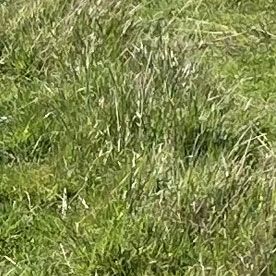
Grass
Perennial grasses are more nutritious, provide more stable feed over the year, and put more carbon in the ground. At this stage the only perennial grass on the property is in the veggie garden which is protected by an electrified chicken net.
sigh
Our aim is to use managed grazing to increase the proportion of perennial grasses in our paddocks. By doing this we will reduce erosion, increase water infiltration, and increase available nutrients. By only using grazing management to create change we also keep costs to a minimum - no fertilisers, no seed, no extra feed and no bailing contractors.
Regenerative grazing methods involve high density, long recovery grazing. This doesn’t have to mean a lot of animals, it means more animals in a given feeding space. In practice this is giving cattle access to small amounts of new grass frequently so that they eat all the different types of grass plants, and the whole of the plant. Given free choice on a big paddock, they would eat only the new growth, and only the best tasting varieties of plant. Once adapted to grazing in this manner, it also confers health benefits for the animals.
Our land is set up so that we can feed the cattle in strips with water positions along a ‘backbone’. At the moment (the very beginning of Summer 2023/24) we have five cows and two calves/steers. They take about a week to get through a strip. At the end of the week they’re cut off from the old strip and start a new strip. There are ‘sacrificial’ laneways that allow us to move water and give them access to shelter. Once cut off from the cows, a strip will have 9-12 months recovery (from the cows, wallabies are a different and problematic matter).
If you want to know more about managing grazing to improve landscape function please visit the resource page of the Regenerative Agriculture Network Tasmania (RANT).
If you want to see photos of our cows, grass and our setup please have a look at our Insta and Facebook pages.